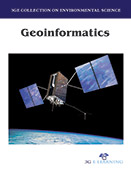Earth and Environmental Science

Geographic information systems (GIS), which are based on computer technologies and enable the gathering, analysis, presentation and distribution of spatial and non-spatial data are becoming more and more common in today’s world. Due to broad possibilities of use and the advantage of digital maps over analogue ones the creation of a GIS system was initiated at the beginning of the 90s of the 20th century. GIS occurs in almost every industry. It is used for education, land management, natural resource management, environmental and aeronautical applications (data on rocks, water, soil, atmosphere, biological activity, natural hazards, and disasters collected for wide range of spatial levels of resolution). With environmental management, their use includes a broad spectrum including as a simple formula, and visualization of natural data as maps of animate nature resources, visualization of pollutant concentrations in the environment and their spatial distribution (e.g. in the air). Moreover, GIS is commonly used for planning and implementing environmental management processes, e.g. water divide areas, hazard monitoring, area usage modeling, or forest protection against hazards. To monitor the environmental status, various data can be retrieved, taking advantage of sensors and remote sensing measuring instruments, thus permitting comprehensive examination of the condition and changes occurring within the natural environment and its valorization, protection, and revitalization.
This edition entitled “Geoinformatics” describes the types of the GIS data formats, database object definitions, relationships, geometric features, and the data organization structure. Some GIS applications and examples are given for better understanding of how GIS data can be used in GIS applications, with the respect to data formats, including surface elevation and slope from digital elevation model data (DEM), with the applicability in different industry. This book provides a strong framework for managing these types of systems with full transaction support and reporting tools. These systems are conceptually similar to other information systems in that they deal with data management and transactions, as well as standardized reporting (e.g., maps) of changing information. However, they are fundamentally different because of the unique data models and hundreds of specialized tools used in supporting GIS applications and workflows. Providing information on the concepts and uses of geoinformatics, this book fills the gap in the available literature on the subject by bringing together concepts, theories, and methodologies in this field.